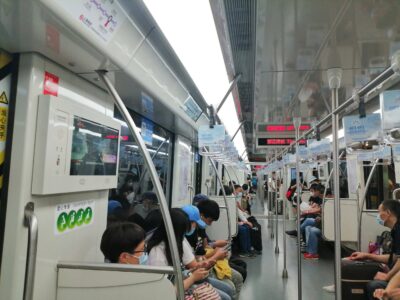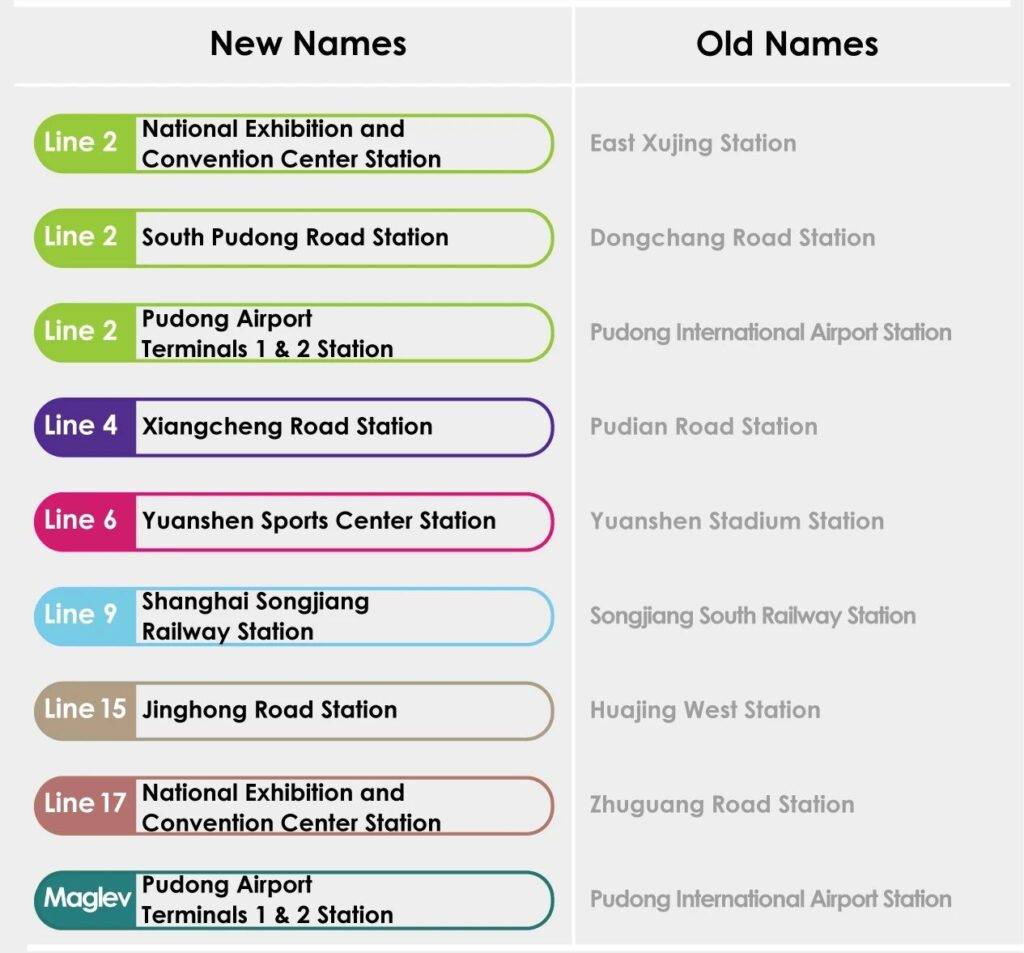
The Shanghai Metro, one of the world’s largest and most efficient subway networks, has introduced new lines and renamed existing ones to enhance commuter experience and streamline navigation.
This update is a significant step towards improving public transportation in the city, making it more accessible and user-friendly for both residents and visitors.
New Lines to Enhance Connectivity
The updated metro map includes several new lines that promise to improve connectivity across Shanghai.
These new additions are designed to reduce travel time, ease congestion, and provide more direct routes to key areas of the city.
Among the new lines, Line 18 stands out as a major development, connecting the northern and southern parts of Shanghai. This line is expected to significantly reduce travel time for commuters traveling between these regions.
Another notable addition is Line 14, which runs through the central business district, providing a much-needed alternative to the heavily trafficked Line 2.
This new line is expected to alleviate congestion and provide a faster, more efficient route for those working in the city center.
Renaming for Clarity and Ease of Use
In addition to the new lines, the Shanghai Metro has also renamed several existing lines to make the system easier to navigate.
The renaming initiative aims to provide clearer, more intuitive names that reflect the lines’ routes and destinations.

This renaming effort is part of a broader strategy to make the metro system more user-friendly, especially for tourists and new residents who may not be familiar with the previous names.
By providing more descriptive and straightforward names, the Shanghai Metro hopes to reduce confusion and improve the overall commuter experience.
Technological Enhancements and Modernization
The update to the metro map is not just about new lines and names; it also includes several technological enhancements aimed at modernizing the system.
New digital displays have been installed in stations and trains, providing real-time information on train schedules, delays, and other important updates.
These displays are designed to be user-friendly and accessible, ensuring that all passengers can easily access the information they need.
Additionally, the Shanghai Metro has introduced a new mobile app that offers a range of features to assist commuters.
The app includes an interactive map, route planner, and real-time updates on train schedules. It also provides information on nearby attractions, dining options, and other points of interest, making it a valuable tool for both daily commuters and tourists.
Environmental and Economic Impact
The expansion and modernization of the Shanghai Metro are expected to have significant environmental and economic benefits.
By providing more efficient and accessible public transportation options, the city aims to reduce reliance on private vehicles, thereby decreasing traffic congestion and lowering carbon emissions.
This is a crucial step towards Shanghai’s goal of becoming a more sustainable and environmentally friendly city.
Economically, the new metro lines are expected to boost local businesses and promote economic development in areas that were previously less accessible.
Improved connectivity can attract new businesses and investments, creating job opportunities and stimulating economic growth.
The construction and operation of the new lines also generate employment opportunities, further contributing to the city’s economic development.
Looking Ahead: Future Plans for the Shanghai Metro
The recent updates to the Shanghai Metro are part of a long-term plan to continuously improve and expand the city’s public transportation network.
Future plans include the construction of additional lines, further technological enhancements, and ongoing efforts to make the system more user-friendly and accessible.
One of the most anticipated future projects is the extension of Line 18, which will further enhance connectivity between the northern and southern parts of the city.
Additionally, there are plans to introduce more environmentally friendly trains and implement advanced technologies to improve efficiency and reduce energy consumption.
Conclusion
The latest update to the Shanghai Metro map, with its new lines and renamed routes, marks a significant milestone in the city’s ongoing efforts to improve public transportation.
These changes are designed to enhance connectivity, reduce congestion, and provide a more user-friendly experience for all commuters.
As Shanghai continues to grow and develop, the metro system will play a crucial role in supporting the city’s transportation needs and promoting sustainable urban development.
For residents and visitors alike, the updated metro map offers a glimpse into the future of public transportation in Shanghai.
With continued investment and innovation, the Shanghai Metro is set to remain one of the world’s leading subway systems, providing efficient, reliable, and sustainable transportation for millions of passengers every day.



